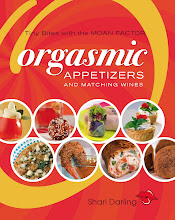 For some time now professional chefs and home cooks have been delving into the world of fusion cooking. Fusion cuisine is primarily defined as "a style of cooking or the innovation of contemporary chefs who fuse or meld together and experiment with the elements -- a variety of ingredients, techniques, and presentations from diverse cultures and traditions to create tasty sensations. One of the primary disciplines of fusion cuisine is the chef’s reliance on fresh ingredients. The freshest, local fish and quality, organic meats and local produce (vegetables and fruits) are essential ingredients to have the dish be ‘authentically fusion.’ Everything from Asian staples, like Jasmine Rice and Udon Noodles to rare spices, such as Szechwan peppercorns and Galangal are celebrated and welcomed ingredients.
For some time now professional chefs and home cooks have been delving into the world of fusion cooking. Fusion cuisine is primarily defined as "a style of cooking or the innovation of contemporary chefs who fuse or meld together and experiment with the elements -- a variety of ingredients, techniques, and presentations from diverse cultures and traditions to create tasty sensations. One of the primary disciplines of fusion cuisine is the chef’s reliance on fresh ingredients. The freshest, local fish and quality, organic meats and local produce (vegetables and fruits) are essential ingredients to have the dish be ‘authentically fusion.’ Everything from Asian staples, like Jasmine Rice and Udon Noodles to rare spices, such as Szechwan peppercorns and Galangal are celebrated and welcomed ingredients.Fusion has become popular for many reasons, primarily because baby boomers, more than 78 million strong, are considered the most culinary-literate and food-active generation in history. Due to the technology age, baby boomers are educated about cultural affairs and are more likely to be in communication with people from around the world. So, they are more ‘open’ to accept and celebrate our world’s wonderful variety of cultures and traditions.
Some folks claim that if a dish is a regional specialty, a wine from the region is more likely to be the most compatible choice. This is certainly a safe bet. Others feel one should drink, in general, Italian wines with Italian foods, French wines with French food, and Canadian wines with Canadian food. But what exactly IS Canadian food? Do we have a culinary style? From my perspective New Canadian cuisine can best be describes as FUSION! Our Canadian chefs come from around the world. They celebrate cultural diversity, use traditional preparations and cooking methods and implement fresh, local produce and proteins.
What are the best wines to marry to Canadian fusion fare? ‘Anything you like!’ When searching for a vintage for fusion foods, look at marrying similar textures and flavours than in worrying about regional matches. Cooking methods and the source of ingredients (local or imported) are less important. What’s more important is choosing a wine that complem
 ents the primary building blocks in the dish.
ents the primary building blocks in the dish.For pairing success, look at choosing the following matches:
· If the dish is sweet in nature; choose a wine that offers sweetness. Make sure the wine is SWEETER than the dish.
· If the dish is hot and spicy; choose a wine with sweetness to soften the heat between bites. Acidic and tannic wines will clash. Tannin increases the perception of heat on your palate.
· If the dish has good acidity (tomato-based sauce), then choose a wine with more acidity.
· If the dish is fatty (cream-based sauces); choose a wine that is fatty too, that is one high in alcohol (14% to 15%). Alcohol creates thickness or viscosity on the palate that feels creamy and oily, thus matching the same mouth feel in fatty foods.
· If the dish is bitter; choose a wine with good tannin and astringency. Tannin and astringency are experienced on the palate as bitterness and dryness.
· Heavily textured dishes (meats) deserve wines with plenty of texture – big, bold reds.











